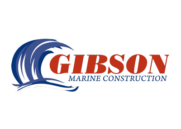Particularly in the marine industry, we are accustomed to fiberglass and synthetic materials. Their flexibility and cost efficiency make these typically the go-to materials for everything from speed boats to docks. The use of extruded PVC for residential docks in Florida is oftentimes sought-after as they are accompanied by attractive extended warranties.
Wooden docks, however, are stunning. If kept in good condition, really “look like they belong” as a natural element integrated against the backdrop of their surroundings.
Therefore, although there are several caveats about the care and maintenance of organic or wooden docks, including gentle power washings and protection with a high caliber sealer, one thing is certain: the lumber needs to be pressure treated. This is not the place to skimp.
Still, even with pressure treated wood, because of the wood’s natural “instability” it is certainly predisposed to split and even of course warp making preventative inspections a must.
The North American Deck and Railing Association (NADRA) offers the best perspective on why pressure treated lumber should be used for decks:
- Treated wood, sold in nearly every lumber outlet in North America, is favored for a variety of reasons: it has a natural appearance, its resistance to termites and rot is well established, wood is a plentiful and renewable resource, and treated wood is usually the most economical choice.
- Longevity. Preserved wood resists damage from termites and fungal decay for decades; some producers offer warranties that extend for the life of the purchaser.
- More than 80% of all U.S. decks are built entirely or partially with preserved wood, according to national surveys. Even when redwood or composite decking is used for the deck platform, preserved wood is usually used for posts, beams, and joists because of its structural strength and ability to withstand deterioration in ground contact.
- Appearance. Treated wood can be found in a variety of lumber grades — from knot-free, close-grained grades to grades with more knots, splits, and wane (missing corners where bark once existed). Other than imparting a greenish or brownish hue, pressure-treatment has little effect on the appearance of wood; the treating process makes wood last longer regardless of its appearance.
A final interesting point disclosed by the NADRA is the environmental consciousness promoted by using preserved wood.
First of all, the trees are grown on managed timberlands which is reassuring, but additionally, “Treated wood requires less energy to produce than alternative building products. The preservatives are manufactured, in large part, from recycled materials. Most important for homeowners and the environment, the treatment extends the life of wood. This enables a deck to last longer, and it reduces demands on forests and other resources.”
Conscious decisions about building marine structures are solid decisions. This is one of the reasons at Gibson Marine that we carefully consult with our clients to determine the things that are most important to them to give them firm assurance of their dock solution. Fortunately, the material alternatives are plentiful and the design options, limitless.

